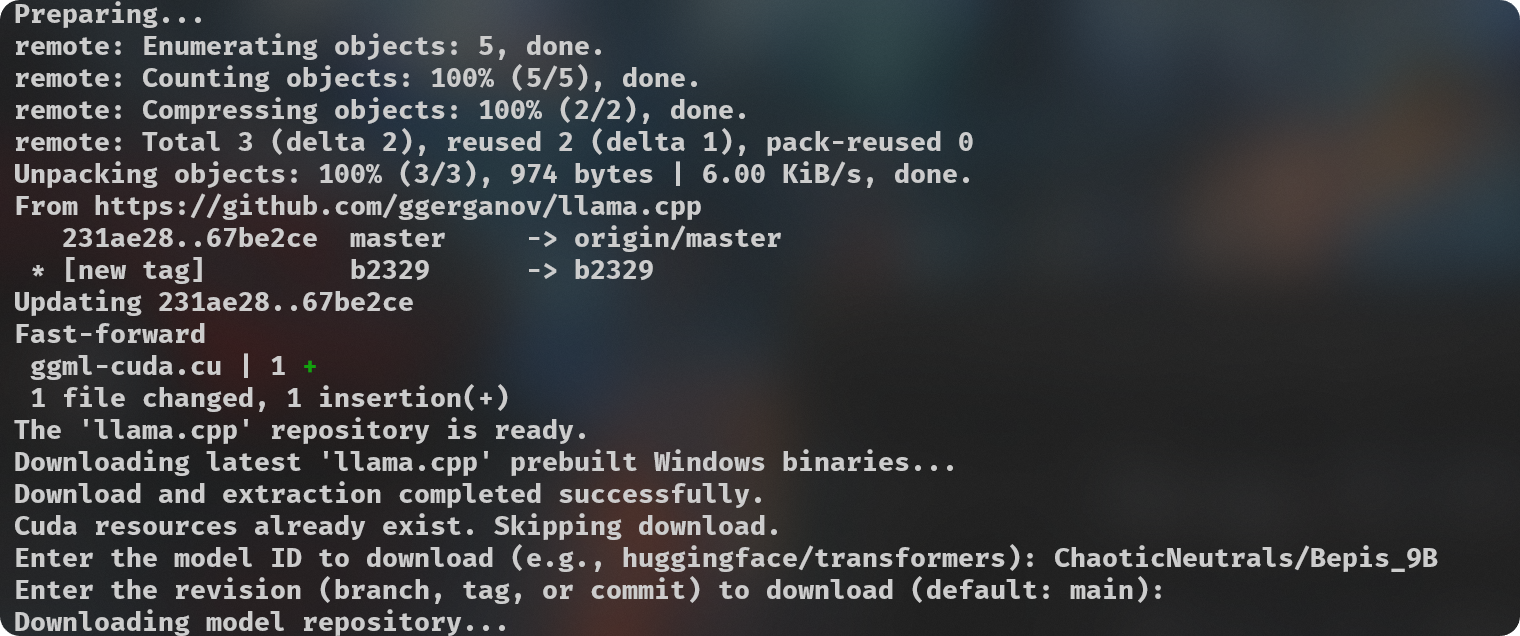---
license: cc-by-nc-4.0
inference: false
pipeline_tag: text-generation
tags:
- gguf
- quantized
- text-generation-inference
---
> [!TIP]
> **Model moved to the AetherArchitectural Community:**
> Now at [**AetherArchitectural/GGUF-Quantization-Script**](https://huggingface.co/AetherArchitectural/GGUF-Quantization-Script).
>
> **Credits:**
> Made with love by [**@Aetherarchio**](https://huggingface.co/aetherarchio)/[**@FantasiaFoundry**](https://huggingface.co/FantasiaFoundry)/[**@Lewdiculous**](https://huggingface.co/Lewdiculous) with the generous contributions by [**@SolidSnacke**](https://huggingface.co/SolidSnacke) and [**@Virt-io**](https://huggingface.co/Virt-io).
> If this proves useful for you, feel free to credit and share the repository and authors.
> [!NOTE]
> **Linux support (experimental):**
> There's an experimental script for Linux, `gguf-imat-lossless-for-BF16-linux.py` [**[context]**](https://huggingface.co/FantasiaFoundry/GGUF-Quantization-Script/discussions/32#66b476238bbe6a86a0228553).
> While I personally can't attest for it, it's worth trying and you can report how well it worked, or not, in your case.
> Improvements are very welcome!
Pull Requests with your own features and improvements to this script are always welcome.
# GGUF-IQ-Imatrix-Quantization-Script:

Simple python script (`gguf-imat.py` - I recommend using the specific "for-FP16" or "for-BF16" scripts) to generate various GGUF-IQ-Imatrix quantizations from a Hugging Face `author/model` input, for Windows and NVIDIA hardware.
This is setup for a Windows machine with 8GB of VRAM, assuming use with an NVIDIA GPU. If you want to change the `-ngl` (number of GPU layers) amount, you can do so at [**line 124**](https://huggingface.co/FantasiaFoundry/GGUF-Quantization-Script/blob/main/gguf-imat.py#L124). This is only relevant during the `--imatrix` data generation. If you don't have enough VRAM you can decrease the `-ngl` amount or set it to 0 to only use your System RAM instead for all layers, this will make the imatrix data generation take longer, so it's a good idea to find the number that gives your own machine the best results.
Your `imatrix.txt` is expected to be located inside the `imatrix` folder. I have already included a file that is considered a good starting option, [this discussion](https://github.com/ggerganov/llama.cpp/discussions/5263#discussioncomment-8395384) is where it came from. If you have suggestions or other imatrix data to recommend, please do so.
Adjust `quantization_options` in [**line 138**](https://huggingface.co/FantasiaFoundry/GGUF-Quantization-Script/blob/main/gguf-imat.py#L138).
> [!NOTE]
> Models downloaded to be used for quantization are cached at `C:\Users\{{User}}\.cache\huggingface\hub`. You can delete these files manually as needed after you're done with your quantizations, you can do it directly from your Terminal if you prefer with the `rmdir "C:\Users\{{User}}\.cache\huggingface\hub"` command. You can put it into another script or alias it to a convenient command if you prefer.
**Hardware:**
- NVIDIA GPU with 8GB of VRAM.
- 32GB of system RAM.
**Software Requirements:**
- Windows 10/11
- Git
- Python 3.11
- `pip install huggingface_hub`
**Usage:**
```
python .\gguf-imat.py
```
Quantizations will be output into the created `models\{model-name}-GGUF` folder.